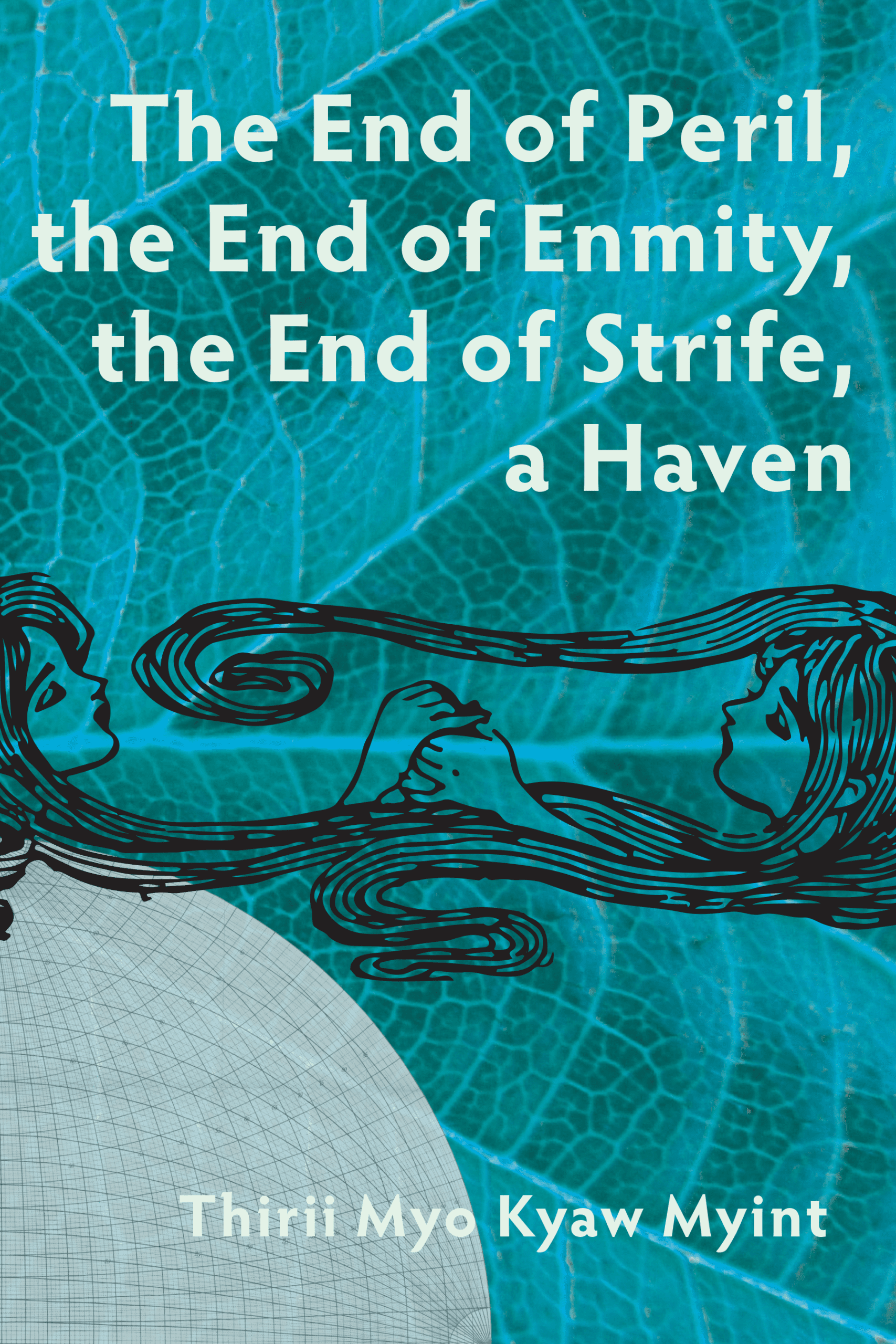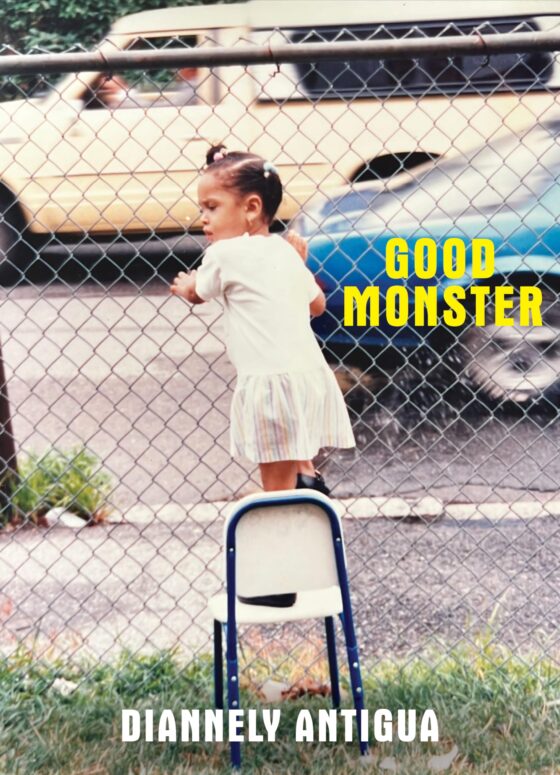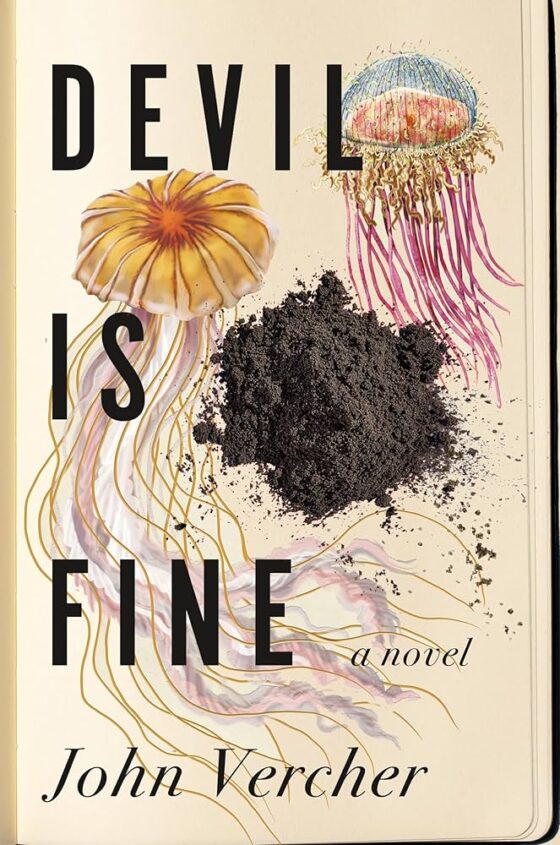
In 2015, at the Tin House Writers Conference, Thirii Myo Kyaw Myint submitted an absolutely magnetizing excerpt—a lyrical piece about a woman who wanders a flooded town with a baby who does not belong to her. Every sentence had the assertive but mysterious quality of myth, simultaneously abstract and concrete.
Now, three years later, her novel The End of Peril, the End of Enmity, the End of Strife, A Haven has been published by Noemi Press. It’s a daring, beautiful, and magic work—it follows an unnamed narrator as she returns to her hometown after fleeing the fall of a domed city built by her father. Every page is artfully layered with complex family memory and compelling ancestral myth.
Recently, Myint and I discussed being “genre queer,” the importance of protecting one’s writing process from capitalism, and namelessness.
***
The Rumpus: The End of Peril, the End of Enmity, the End of Strife, a Haven is a deeply layered work. It winds together several narrative threads, all of which enrich one another, thematically and stylistically—there’s the story of the narrator’s childhood in “the domed city,” the narrator’s flight to “the harbor city,” the mythic history of her people, and a folktale about a king’s daughter. Can you talk about where this book started for you?
Thirii Myo Kyaw Myint: The book started out as a sixteen-page short story that I wrote for Azareen Van Der Vliet Oloomi’s fiction workshop at the University of Notre Dame. I wish it had more interesting origins, but that’s where the novel was born, in an MFA program, in South Bend, Indiana. The day of my workshop, I remember Azareen asked the class to list all the themes they found in my story. My classmates came up with many, over twenty or so: inheritance, exile, identity, historical violence, environmental devastation, motherhood, myth, war, etc. I wrote them all down in my notebook, and that’s when it occurred to me, looking at all these themes, that I was writing a longer work, not a short story.
In the short story, which was also titled “The End of Peril, the End of Enmity, the End of Strife, A Haven,” the main narrative thread was the same as the one in the novel: an unnamed narrator returns to her ancestral home. I had just read Tayeb Salih’s novel Season of Migration to the North, and I wanted to write a story of a return from emigration. The moment of return is often traumatic because it is the moment when the person returning comes to realize that the return is impossible, that the place they hoped to return to no longer exists; it has changed into a new place, and they themselves have changed into a new person who no longer belongs there. The narrative thread about the ancient war between the narrator’s ancestors, and the thread about the narrator’s childhood in the utopian “domed city” emerged as ways for me to explore the narrator’s complicated sense of lineage, identity and belonging, of why her return to the “harbor city” is, in the end, not realized.
Rumpus: This book defies categorization, not only in form—is it a novel, a novella, a collection of prose poems?—but also in mode. Is it fabulism, realism, myth, dystopian? What forms and modes do you see this book as being in conversation with?
Myint: Poet Juliette Lee once described the writer Janice Lee as “genre queer,” and I’ve been borrowing that term ever since to talk about my own work. I think writing, like sexuality and gender, is fluid and unknown, even (or especially) to the writer. Categories are, by definition, externally created and applied. When I was writing this book, I had no idea what I was writing. Even after having written it, I still don’t know what it is. The book is just itself. I have taken to calling it a novel simply because, to paraphrase Bakhtin, the novel is the only genre that is still developing, that is still indeterminate.
During the editorial process, my publisher Carmen Giménez Smith emailed me and asked if I imagined the book as being fabulist or realist or a hybrid. I told her that the way the characters in the harbor city understand and relate to their world was based on my own immersion in Buddhist and animist belief systems, but that I didn’t think this made the world “fabulist” or “magical realist.” It was just my “realism.” Carmen was completely understanding of my perspective and I am so grateful for the way in which Noemi did not rely on these categories in their promotion and publicity of the book. I think often the drive to categorize books, like the drive to categorize people, is a kind of imperialist or colonialist drive to put something in a category in order to have power over that think. This is why the most powerful writers for me have always been the ones whose books defied categorization: Virginia Woolf, Clarice Lispector, W. G. Sebald, etc.
Rumpus: Do you find that this drive to defy categorization—to write work that’s genre queer—is in any way integral to your writing process? And do you think that The End of Peril, the End of Enmity, the End of Strife, a Haven is in any way about this defiance?
Myint: I don’t know if I would frame it in terms of defiance, but I am definitely very protective of my writing process. I cannot allow myself to think about the existence of genre, or publishing as an industry, or “an audience” when I write. I have to immerse myself so deeply and fully in the writing that I forget—albeit briefly—that capitalism exists.
When I am able to do this, the writing emerges on its own terms. When I am not able to do this, I can’t write at all. About six months after I started The End of Peril, for example, I began working as an editorial intern at Hachette Book Group for the summer. Every day from nine to five, I would read through the slush pile, and send out scores and scores of rejections. When I got off work, I would go to a coffee shop or the library to try to write, but it was always painfully laborious. I could not stop thinking about my manuscript the way an editor would, considering its readability, its marketability, its potential earnings (or lack thereof). I did not write a single word that summer that I could use. It was only when the internship was over that I was able to write again, or rather, that that book was able to write itself again. It is the book, I think, that is defiant, not me!
Rumpus: One of the things that I love about this novel is the fact that all of the characters and many of the places are nameless—the girl, the mother, the father, the king’s daughter, the chief’s son, the domed city, the harbor city. This not only lends a mythic/folkloric dimension to the text, it also prepares the way for the ending, when various characters begin to merge roles. What does being named vs. being nameless mean to you—in this work, and otherwise?
Myint: I did not give names to the characters in The End of Peril because I wanted them to be able to escape their names. I did not want to tie them to a specific place, language, or culture. While The End of Peril was partly based on Yangon, the city where I was born, it wasn’t Yangon, and I didn’t want to give my characters Burmese names, which would have harmed by the process of transliteration anyway. I also did not want to mark my characters as “foreign” or “exotic” by giving them names which would be unfamiliar to English-language readers, names which they would not be able to pronounce.
When I was in college, I participated in a peer-facilitated female sexuality workshop where gendered pronouns were not allowed. We were not allowed to say boyfriend, girlfriend, husband, wife, sister, brother, mother, or father. It was a bit awkward at first, but after a few weeks, I was amazed at how once those gendered terms were banned, I became a better listener. I could no longer rely on my preconceived notions of what boyfriends were like, or what mothers were like, and so I had to evaluate each individual my peers talked about only as an individual. In the same way, I hope that because my characters do not have names, which carry racial, ethnic and religious connotations, my readers won’t be able to rely on their preconceived notions of what Burmese people are like, or what Buddhist people are like, but will have to be become better listeners of the character’s individual stories.
Rumpus: What are you working on next?
Myint: I’m working on a family history project, which is tentatively titled “Zat Lun.” Zat lun is a Burmese word that roughly translates to narrative or chronicle and differs from the word pon pyin, which means story, tale, or fable. A simplistic analogy would be that zat lun is to nonfiction what pon pyin is to fiction. Unlike a pon pyin, which has a beginning, a middle, and an end, a zat lun is a meandering narrative whose beginning and end are obscured and uncertain. Because it endeavors to chronicle “true” or “real” events, a zat lun is inevitably complicated, contradictory, and incomplete. The project currently consists of three narrative threads traversing time and place. The first thread follows my grandparents and great-grandparents from British colonization to World War II and its aftermath, the second thread follows my parents’ last years in Burma/ Myanmar, leading up to the 8888 Uprising and the violent coup that followed, and the third thread follows my family’s immigration to the United States, and my coming to adulthood here.
For a long time I avoided writing about myself, partly because as an immigrant woman of color, my fiction was often read as autobiographical anyway, and partly because I already spent a lot of my time answering questions about my identity, my family, “my” country, and “my” people to strangers and acquaintances alike.
About a year ago, though, I came to realize that it could be empowering for me to write about my identity on my own terms and since I started this project, I have found that to be true.
Rumpus: What have you been reading lately that you’ve loved?
Myint: Two books I just finished and cherished are Pamela Lu’s Pamela: A Novel and Rowland Saifi’s The Minotaur’s Daughter. Both books have that rare quality of being conducive to not only slow-reading, but also to re-reading. I read them as if I were sutras or philosophy, a few pages at a time, often re-reading a sentence over and over again. Sometimes I am in the mood for plot-driven page turners, and I enjoy those, too, but I find that often when I finish those kinds of books, I feel empty, and I seek out another one right away. When I finished Pamela and Minotaur’s Daughter, though, I felt the opposite. All I wanted to do was re-read them, and make them last longer.





